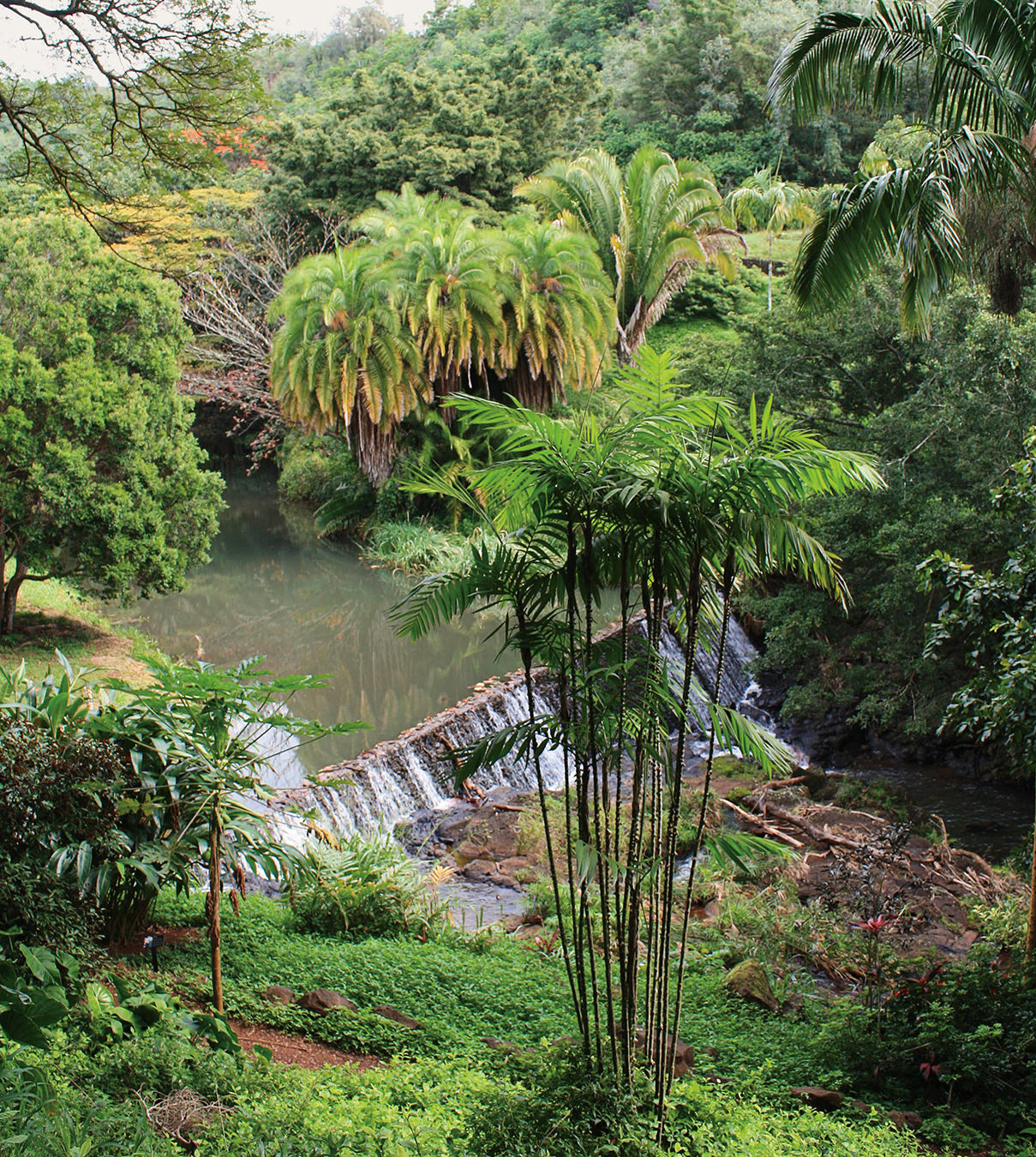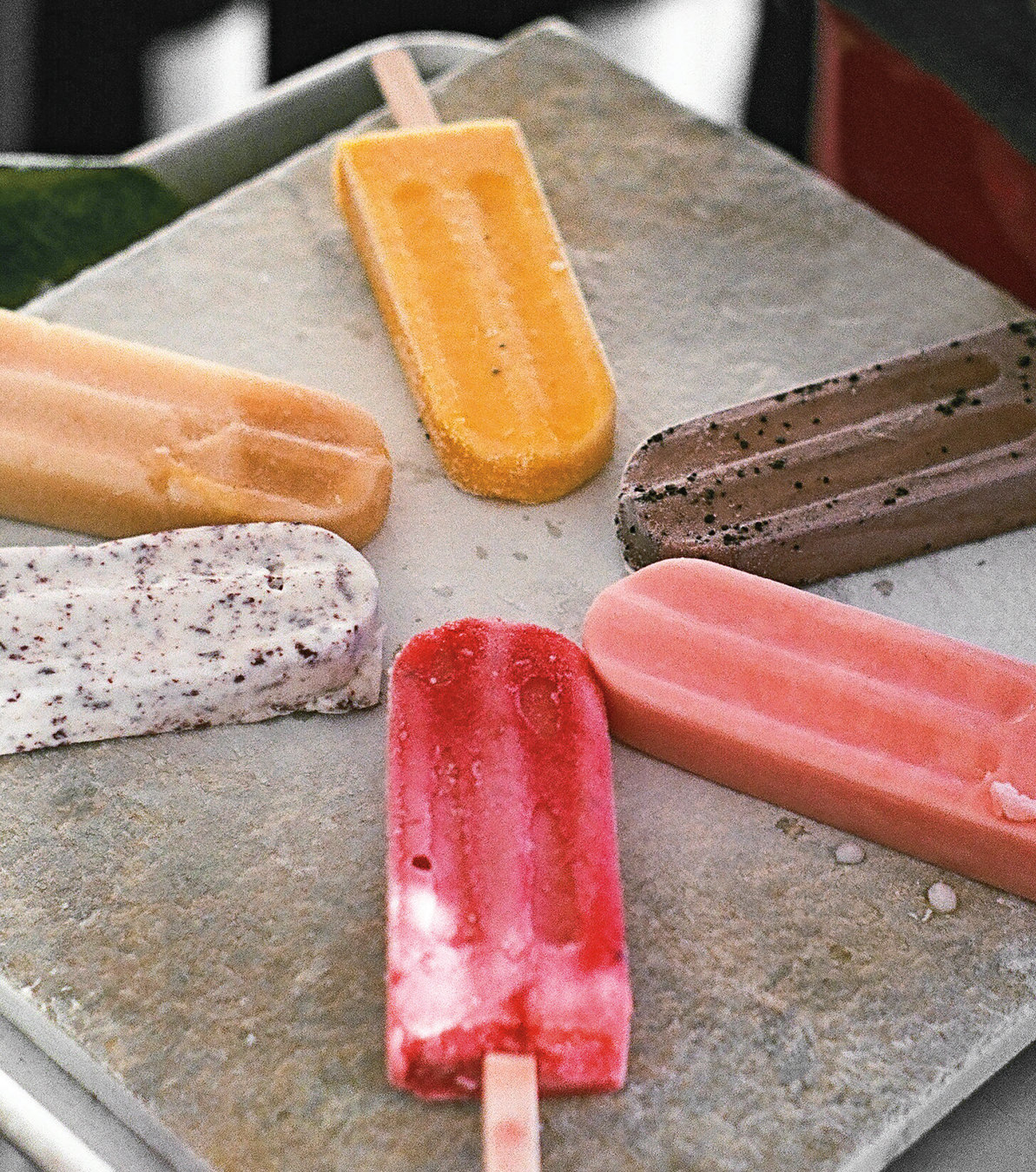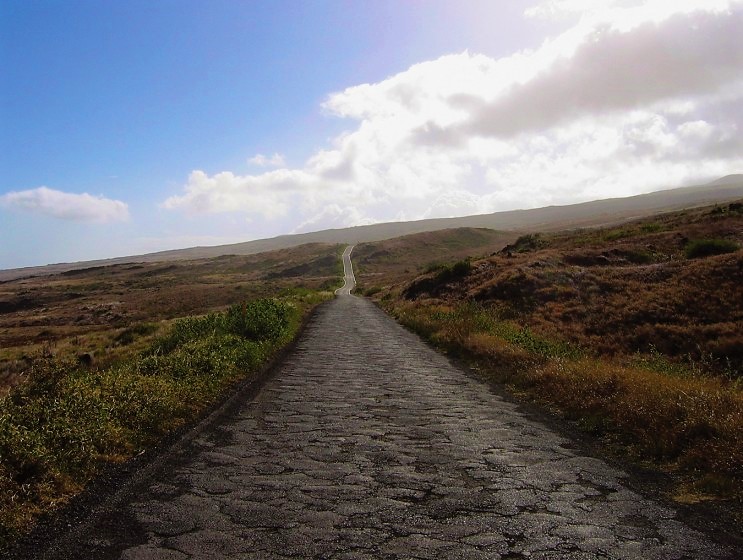A Culinary Journey on the Hawaiian Islands of Oahu and Kauai
From the dish created for young surfers to daily catches and locally sourced produce, these Hawaiian Islands are hubs for gastronomic delights.
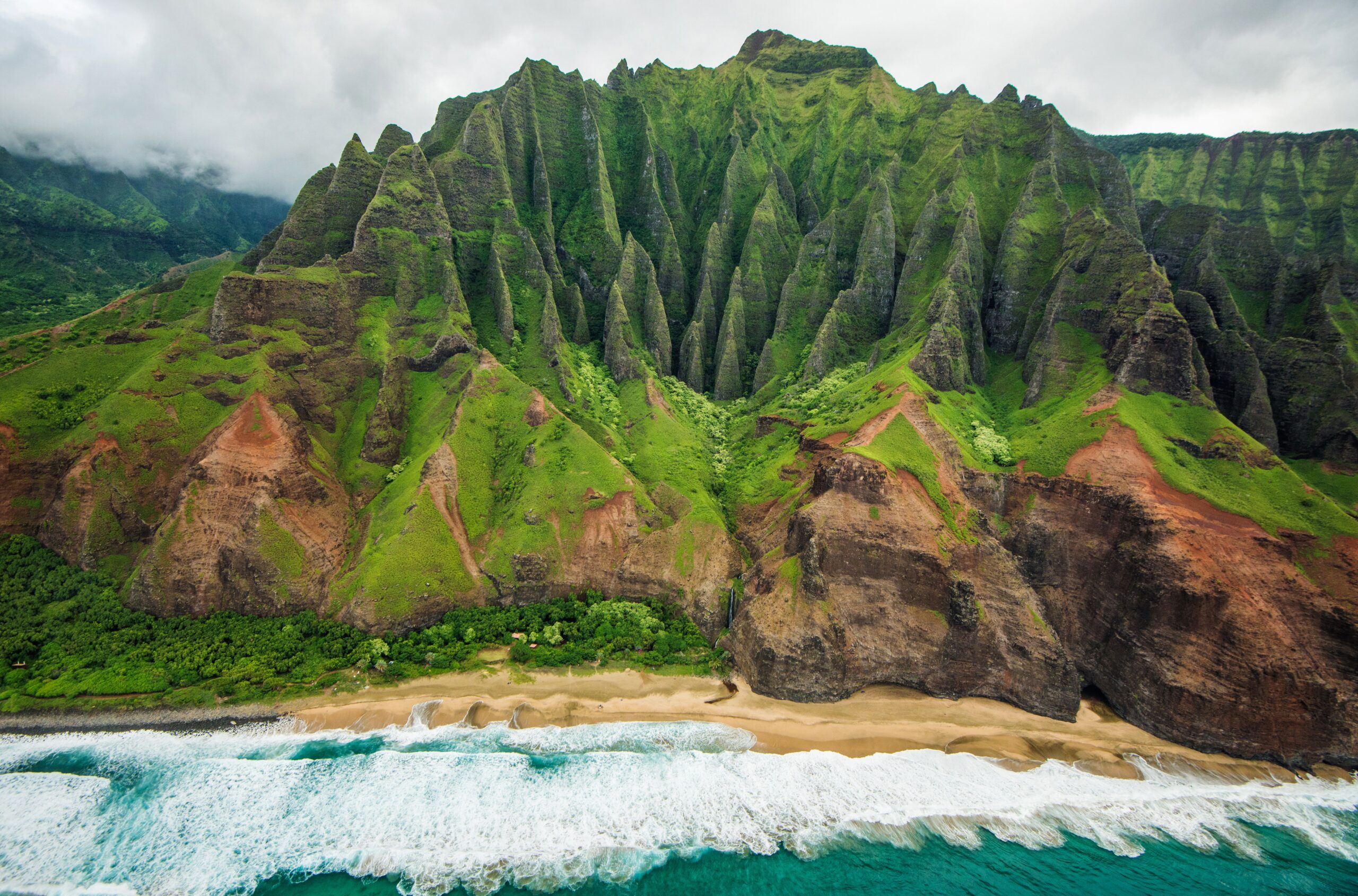
Na Pali Kauai. Photo courtesy of Kauai Visitors Bureau.
With overtourism an issue in Hawaii, visitors need to be aware of sustainable travel practices. The Sustainable Tourism Association of Hawaiʻi provides tips on responsible travel, and Kualoa Ranch Private Nature Reserve on Oahu offers a Malama (to care for, protect, and preserve) Experience Tour. This immersive volun-tourism eco-tour teaches guests about sustainability, including how important taro is to the Hawaiian people and how to harvest it.
More generally, local restaurants pride themselves on using fresh, island-grown ingredients, from the urbanized Oahu, location of Honolulu, the state capital, to rural Kauai.
Known as the Gathering Place, Oahu is the third-largest Hawaiian island and home to a diverse population, which creates a fusion of food cultures rooted in the values and traditions of the Native Hawaiian people.

Minas Fish House beachside dining. Photo by Christian Horan.
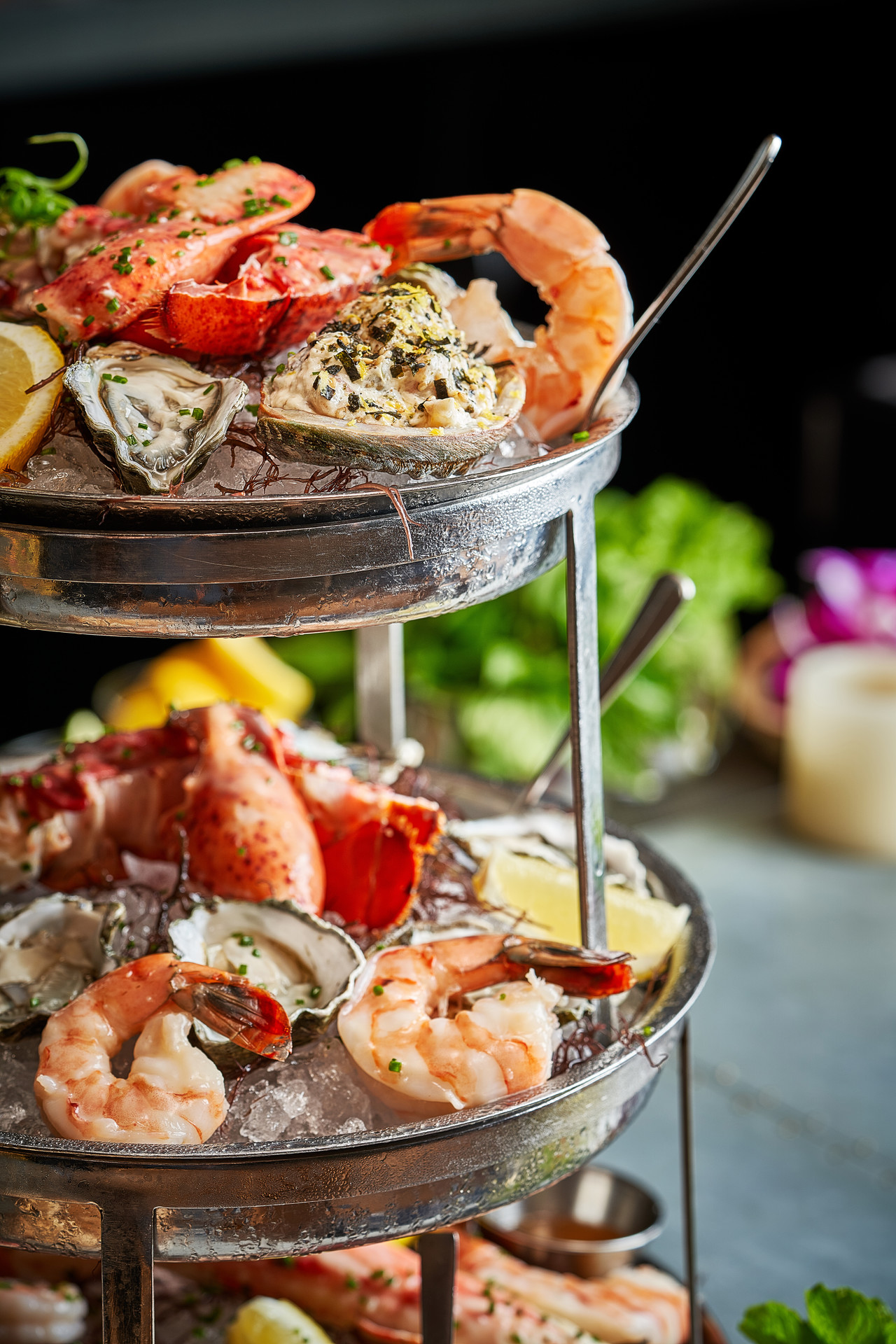
Minas Fish House. Photo by Four Seasons.

House Without A Key coconut cake. Photo by Sabrina Pirillo.
At the Four Seasons Resort O‘ahu at Ko Olina on the island’s western coast, a fish feast awaits at the beautiful open-air oceanfront setting of Mina’s Fish House. Created by Michelin-starred chef Michael Mina, the menu features an array of fresh catches direct from the Pacific, whole fish, and local produce. It also has in-house fish sommeliers, who collaborate with local fishers to educate diners about the catch of the day and appropriate pairings with their meal.
In Waikiki, the Hawaii Food & Wine Festival celebrates Hawaiian and Asian eats. The festival features Asian cuisine that fuses Japanese, Vietnamese, Chinese, and Korean flavours with local ingredients. In 2022, Iron Chef Masaharu Morimoto gutted and served a fresh 120-pound ahi tuna.
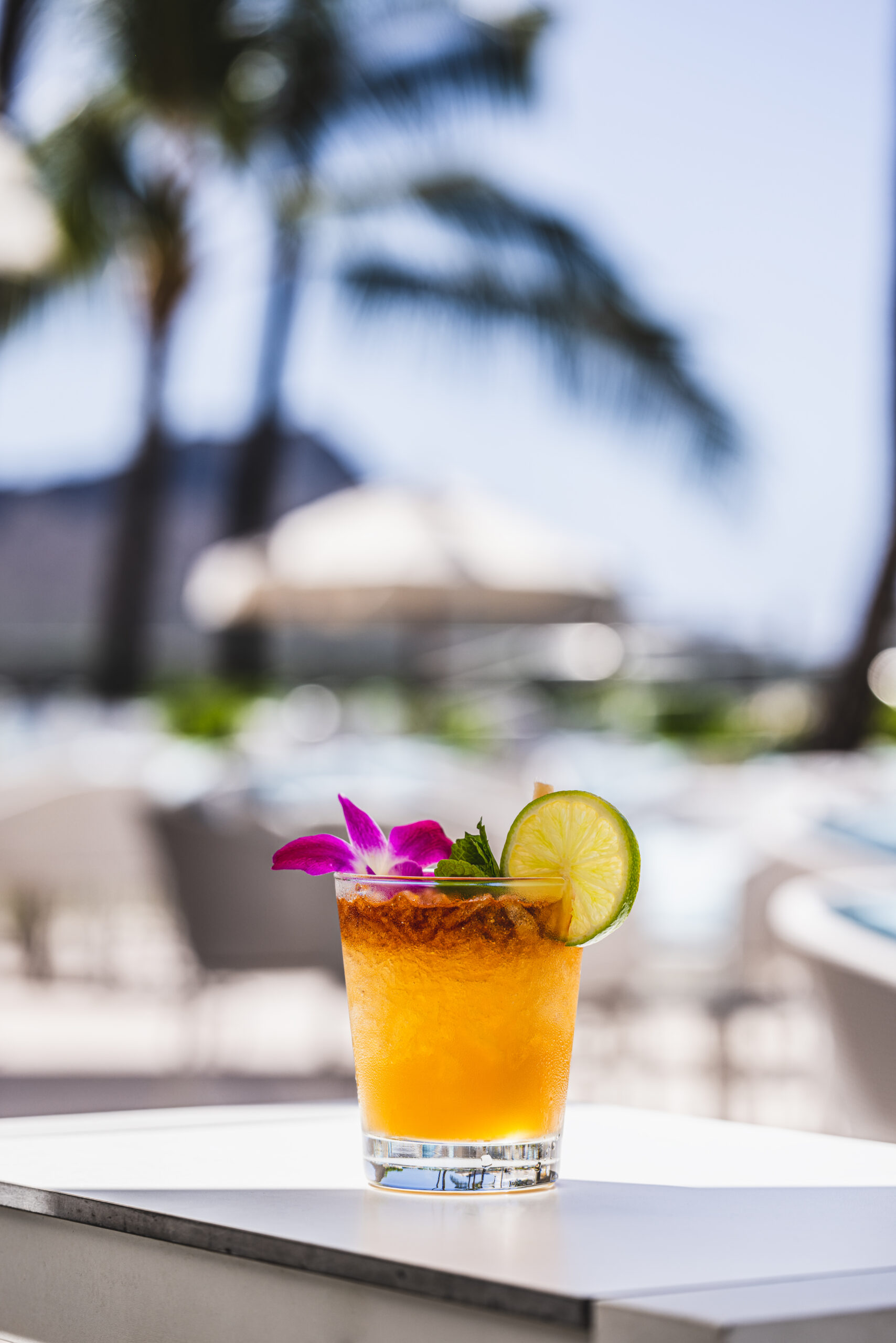
House Without A Key Mai Tai. Photo courtesy of Halekulani.
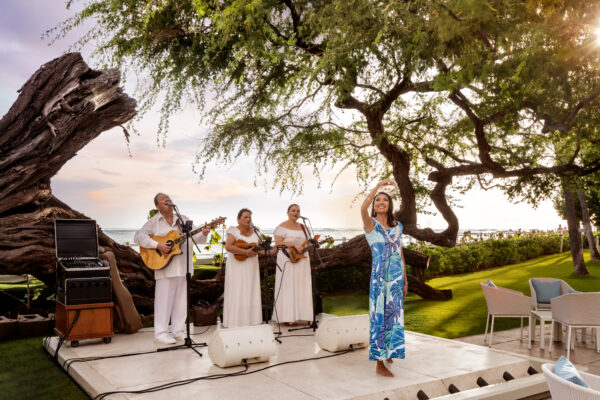
House Without A Key in Honolulu’s Halekulani hotel was named for the 1925 Charlie Chan novel written by Earl Derr Biggers while he was staying there. It is a popular gathering spot for sunset cocktails, appetizers, and Hawaiian entertainment. Enjoy a mai tai that pairs perfectly with a slice of coconut cake while you sit under the 130-year-old kiawe tree and watch a hula dancer tell stories rooted in Hawaiian traditions.
Kauai, the Garden Island, is Hawaii’s oldest and northernmost island. Starting your day with one of Hawaii’s iconic dishes, loco moco, from Daybreak Restaurant in the Sheraton Kauai Coconut Beach Resort is no ka ‘oi (the best). This comfort dish originated in 1949 as a simple and affordable way to feed young surfers and consists of white rice (Hawaii’s second-largest crop), topped with a hamburger, fried egg, and brown gravy. Don’t forget to grab a POG—passion fruit, orange, and guava juice—to go.

Sheraton Kauai Coconut Beach Resort, Daybreak Restaurant Loco Moco dish. Photo by Sabrina Pirillo.
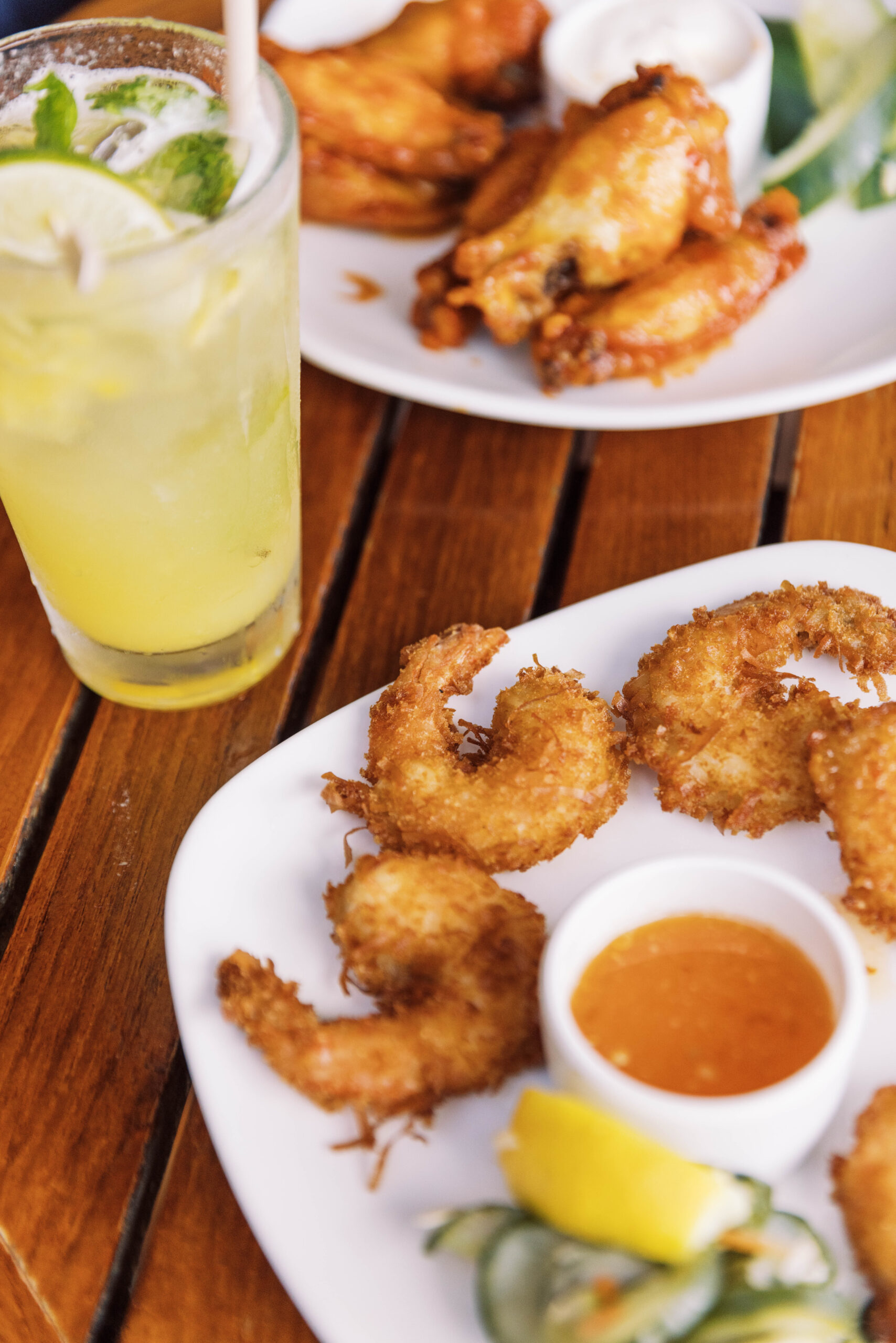
Dukes Kauai coconut shrimp. Photo courtesy of Dukes Kauai.
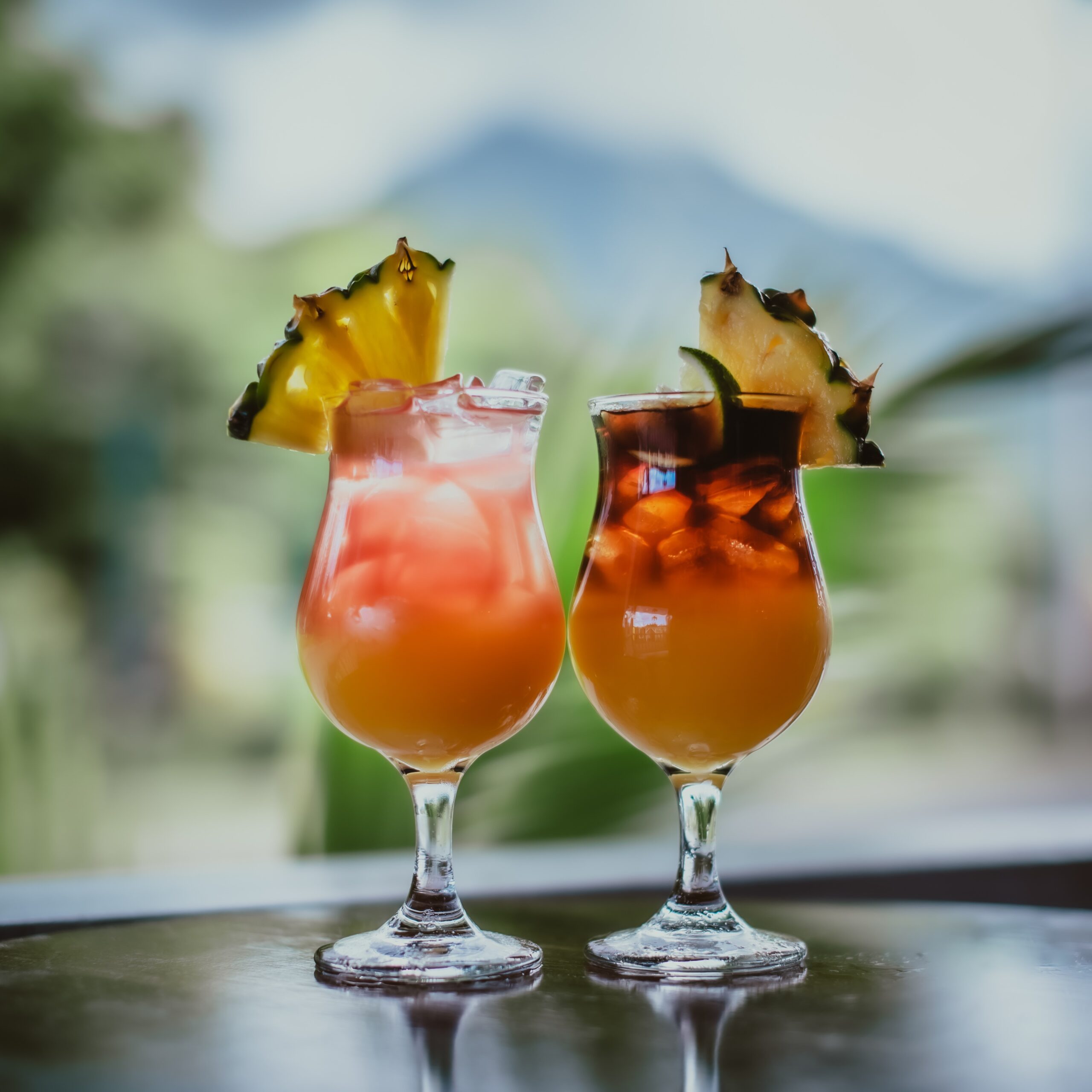
Tahiti Nui Mai Tai. Photo courtesy of Tahiti Nui.
Tasting Kaua‘i’s Hanalei Town walking tour lets you explore fresh, seasonal eating along with the beautiful community. The roots of taro, a plant with heart-shaped leaves grown in fields at the foot of Hanalei’s misty green mountains, are used to make poi, a Hawaiian staple starch. Taro hummus and chips alongside kālua pork, rice, and lomi lomi salmon from Hanalei Taro & Juice Co. is a model farm-to-table experience. At the laid-back local spot Tahiti Nui, the world-famous Tahiti Nui mai tai garnished with pineapple, lime, and cherry is a must-try. Founder Aunty Louise Marston created the recipe, which is still a secret.
Friend and mentor to Kalapaki Beach’s legendary beach boy Percy Kinimaka, Duke Kahanamoku grew up with the ocean as his playground. So it’s no wonder Duke’s Kauai is where the beach and Hawaiian-style dining meet. In addition to crispy coconut shrimp, tristan lobster, and macadamia nut hummus with Hawaii-grown mac nuts, you can’t go to Hawaii and not have poke tacos.
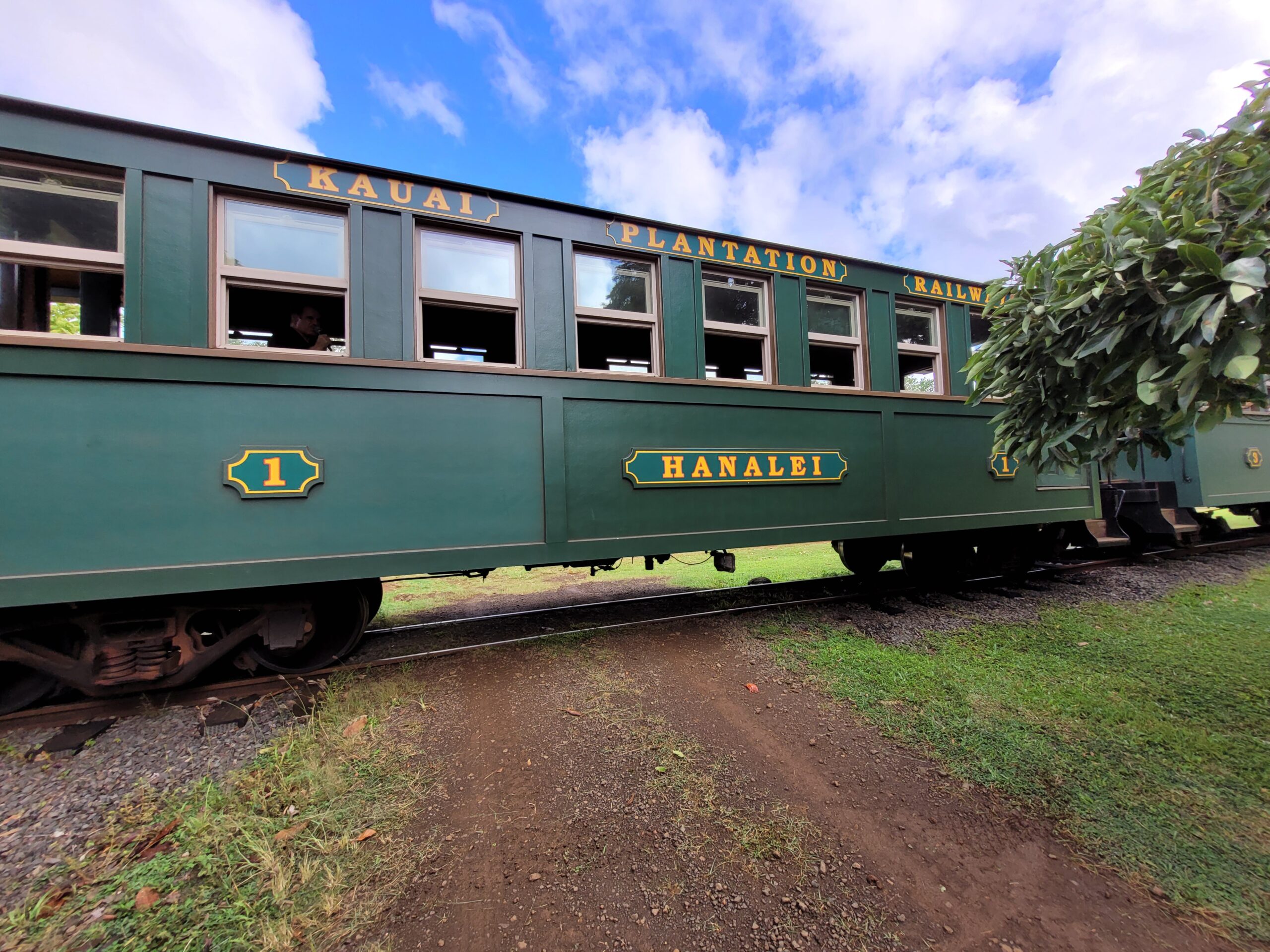
Kilohana Plntation train. Photo by Sabrina Pirillo.
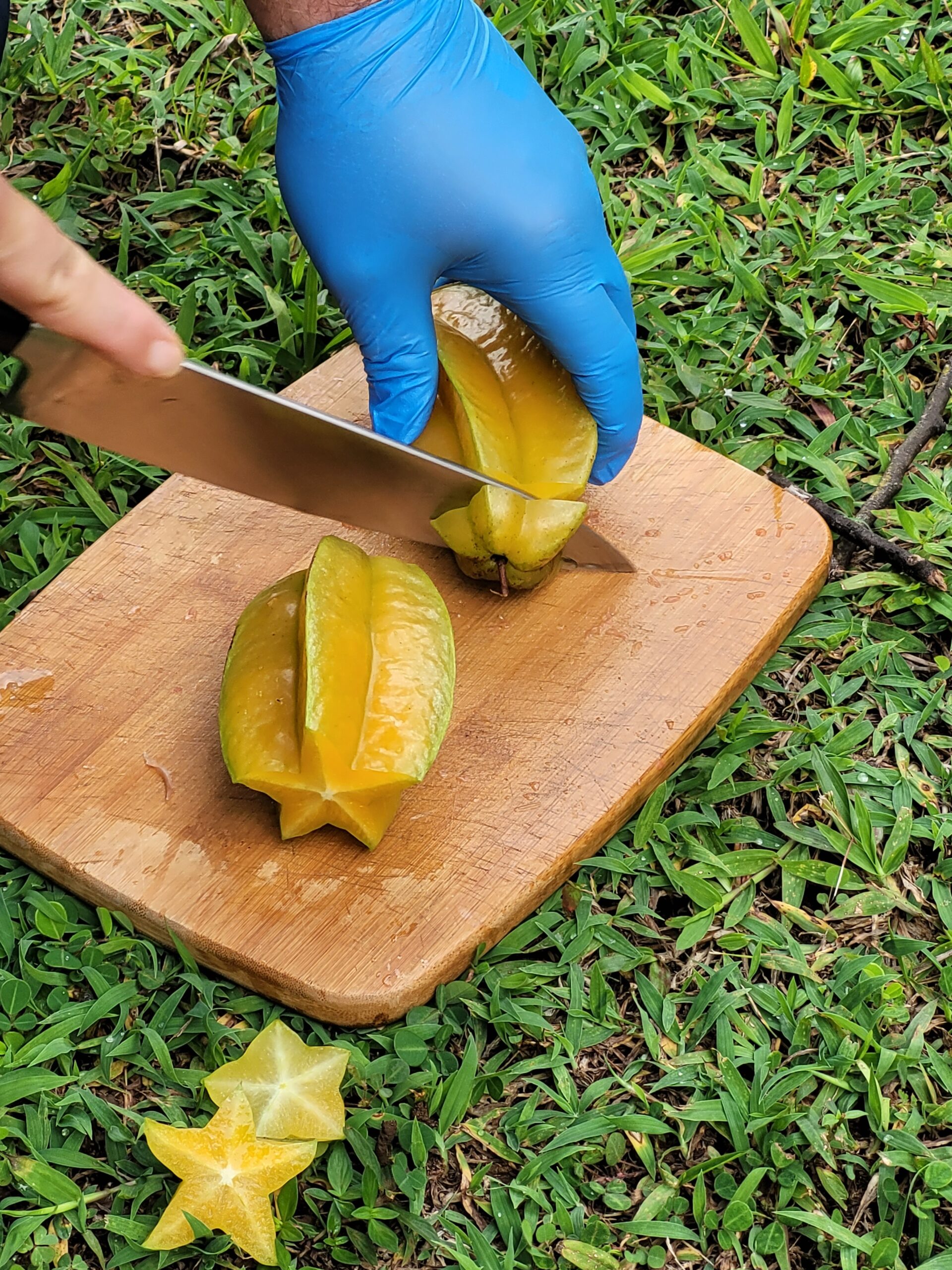
Kilohana Plantation starfruit. Photo by Sabrina Pirillo.
All aboard the Kilohana Plantation train. The four-kilometre track passes through fields of island crops like sugar cane and taro. Sample fruits directly from the mango, banana, papaya, and pineapple groves and learn how the crops are harvested.

